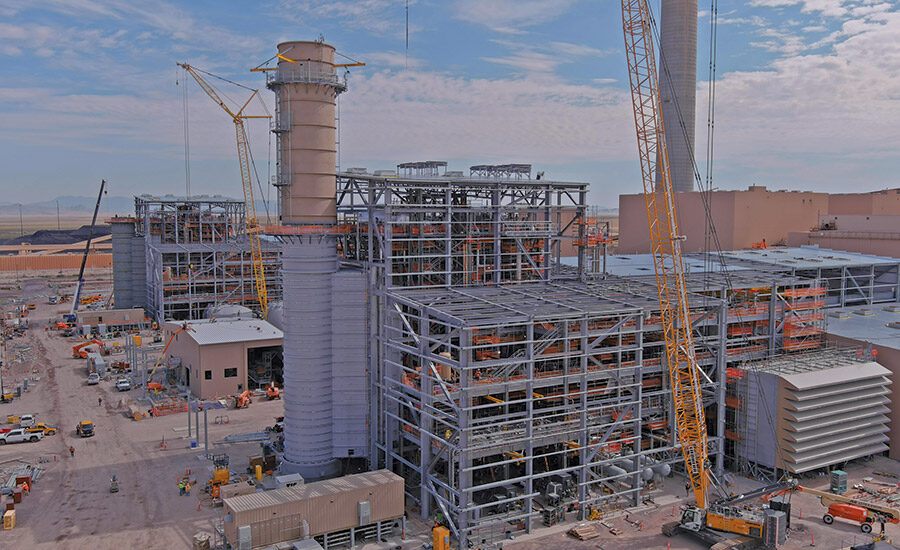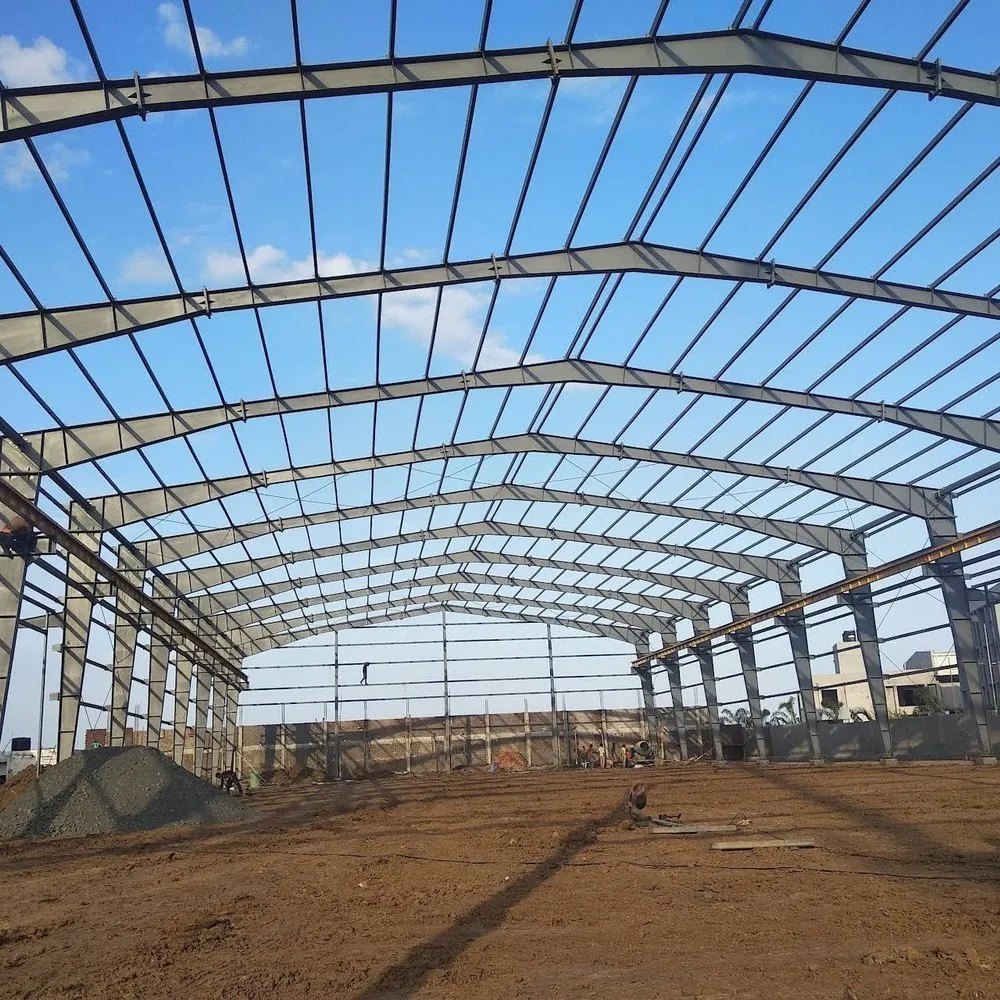
Coal-Fired Power Plant Will Gain New Life with Green Hydrogen
Utah’s Intermountain Power Project, which generates electricity for communities in six states and as far away as Los Angeles, is getting a refresh that will allow it to continue operating for decades while producing fewer greenhouse gas emissions and adding flexibility in the form of energy storage. The multibillion-dollar IPP Renewed project is adding a pair of cleaner hydrogen-fueled turbines as coal-fired units at the power plant are approaching retirement and making other key upgrades to the facility thanks in part to the site’s unusual features.
IPP came online in the 1980s at a 4,614-acre site more than 100 miles southwest of Salt Lake City near Delta, Utah. It supplies energy to 35 participating utilities, mostly in Utah and Southern California. Its generation and transmission assets are owned by the Intermountain Power Agency (IPA), a political subdivision of 23 Utah municipalities, while the Los Angeles Dept. of Water and Power (LADWP), which is IPP’s largest buyer, serves as the operating agent and project manager for IPP.
“For nearly four decades, [IPP] in central Utah has generated and delivered a critical energy supply,” says Mia Rose Wong, senior public relations specialist with LADWP.
However, the agreements for selling power from the 1,800-MW coal plant were scheduled to terminate in 2027. In 2015, most of the IPP participants decided to construct new power generation capacity at the site and to remain with it until 2077, Wong says. After conducting feasibility studies, they decided on installing natural gas units with the ability to use a hydrogen fuel blend that would generate fewer emissions.

The project is aimed at extending the plant’s usable life by decades while producing fewer emissions.
Photo courtesy Intermountain Power Agency
The project has two main components: the $1.7-billion work around the new generating units at the plant and the $2.7-billion upgrades to IPA’s Southern Transmission System. Construction at the plant started in 2022, with work split into multiple contract packages. Granite Construction Co. handled site preparation, and M.J. Electric led work on a switchyard expansion. The Industrial Co. (TIC) is the generation engineer-procure-construct contractor, and its work is scheduled to complete this year.
“Given the scope and complexity of the project, EPC was an ideal fit as it ensures a single point of accountability and streamlined coordination among all parties,” says Petar Willhite, project manager at TIC.
More than 2,000 employees have put more than 5 million labor hours combined into the project so far, according to Willhite. To ensure they would have enough workers available, TIC brought its centralized training program to the field for the first time, offering certifications on the job.
“This gave more of our craft the opportunity to enhance their careers and accelerate their paths to becoming journeymen,” Willhite says.
“That salt dome presented a unique opportunity to develop long-term, large-scale energy storage.”
—John Ward, Spokesman, Intermountain Power Agency
In the 2000s, California law set emissions limits for fossil fuel power plants, and in the 2010s LADWP officials committed to eventually ending the use of coal power altogether. For the revamped IPP, they plan to use “green hydrogen,” which is produced with water by electrolysis using renewable energy.
The plant is uniquely suited to use hydrogen thanks to its location above a geologic salt dome where a separate team of developers has planned to build a hydrogen hub storing gas underground in a pair of 4.5-million-barrel caverns that will provide fuel for the plant.
“Through a stroke of good fortune, the original Intermountain Power Project was constructed directly above a geologic salt dome that is uncommon in this part of the country,” says IPA spokesman John Ward. “That salt dome presented a unique opportunity to develop long-term, large-scale energy storage in addition to the new generating capacity.”
The U.S. Dept. of Energy is providing a $504.4-million loan guarantee for the estimated $1-billion hub project called Advanced Clean Energy Storage (ACES) Delta. Its initial design will allow it to convert more than 220 MW of renewable energy to 100 metric tons of green hydrogen daily, according to Mitsubishi Power, which is one of the firms behind the ACES Delta project.
IPP participants will bring their own surplus renewable energy to ACES Delta for conversion into hydrogen, which can be stored until it’s needed, according to Ward. That makes the hydrogen component of IPP Renewed “a significant opportunity for deploying seasonable renewable energy storage at a massive scale,” he says.
IPA also picked Mitsubishi Power to supply two of its M501JAC gas turbines with a combined 840-MW capacity for the plant. The plan for the gas turbine combined cycle plant is to initially use a 30% hydrogen blend with natural gas and eventually increase the percentage of hydrogen as Mitsubishi improves its technology. The company says its equipment will be capable of 100% hydrogen generation by 2045.
The change in fuel will reduce the plant’s carbon dioxide emissions by more than 75% compared with coal-fired generation, according to Mitsubishi.
With heavy hauling required to move equipment on site, TIC did not want to have to rely on the schedule and reliability of a specialty subcontractor. So the contractor decided to self-perform the work itself for the first time using self-propelled modular transport (SPMT) units.
“TIC prides itself on self-performing the majority of our scope,” Willhite says. “Adding heavy hauls to that list is a game changer.”
The final piece of work on the project is the modernization of the 2,400-MW transmission system linking the plant to Southern California. That will include building new DC converter stations at both ends of the line. It is due for completion in 2027.
Advancing the project to this point has required a lot of cooperation. IPP’s participant utilities range from among the largest in the country to some very small towns, and they have very different needs, and Ward highlights the cooperation needed to complete the work.
“We were able to come together for a project that works for everyone by relying on the goodwill and working relationships that have been developed over nearly 40 years of operating the original project,” Ward says. “This is truly a shining example of the benefits of regional energy cooperation.”
Post a Comment
You must be logged in to post a comment.





